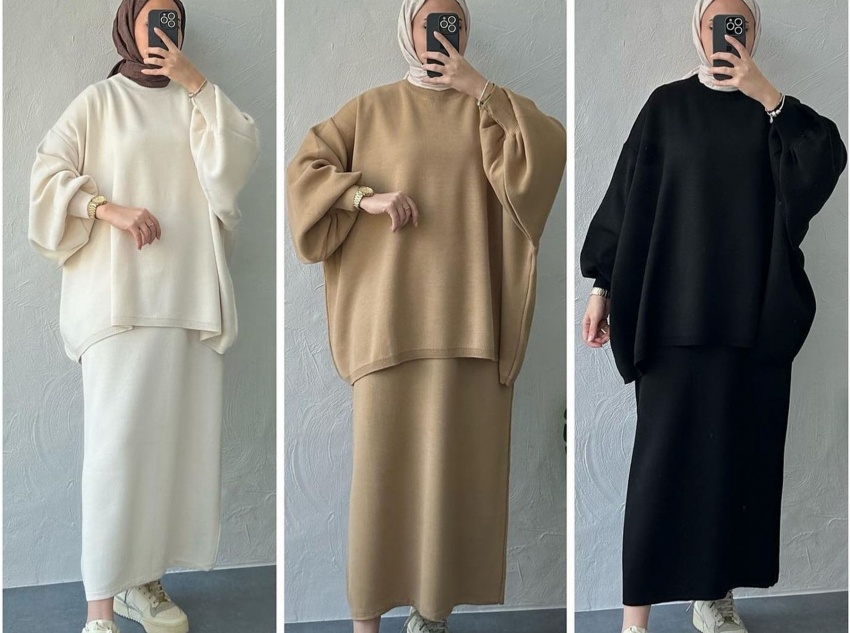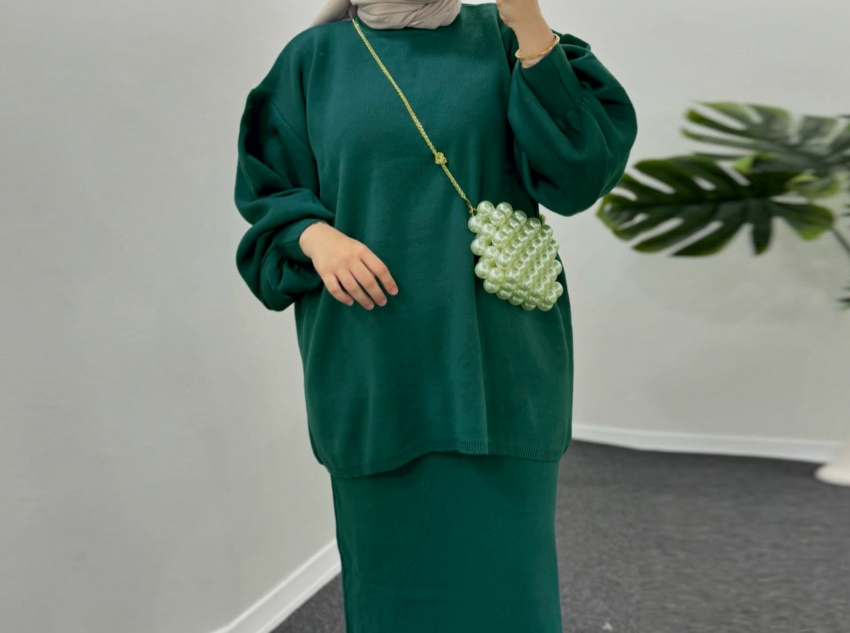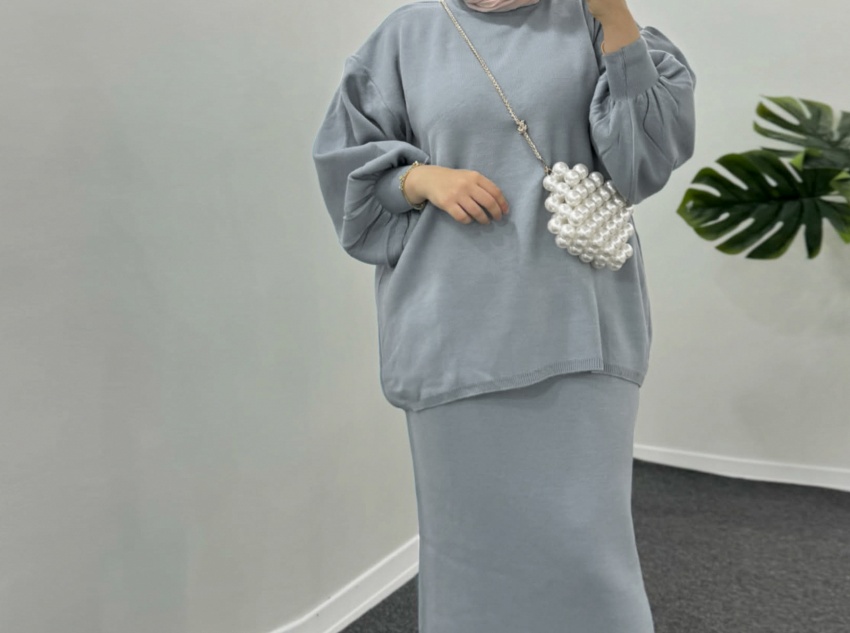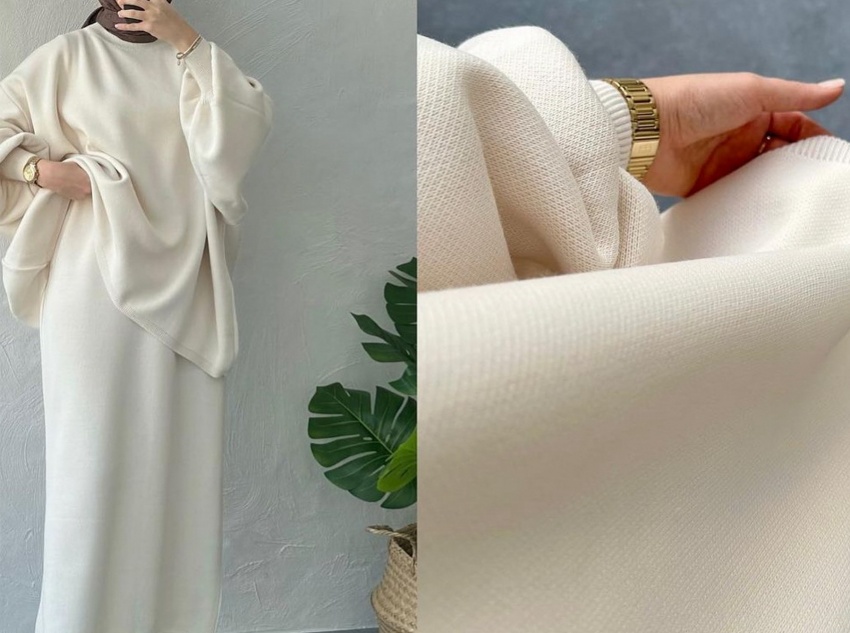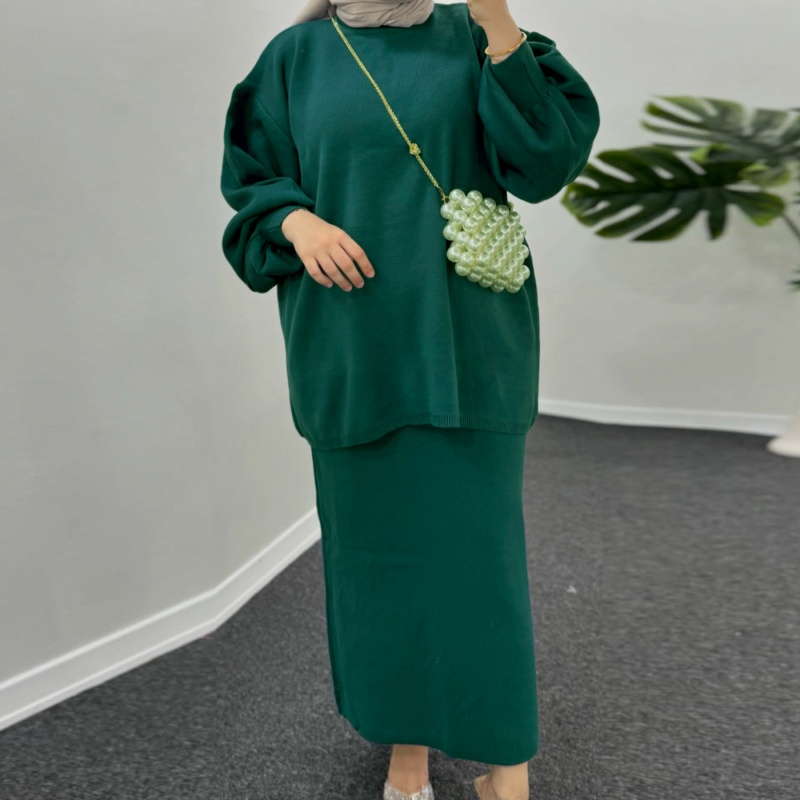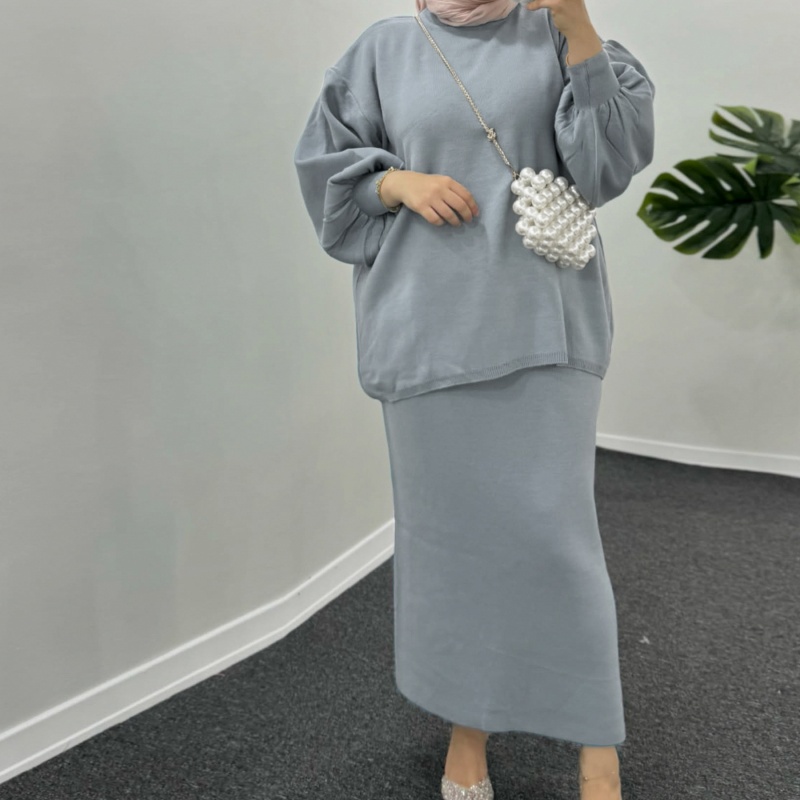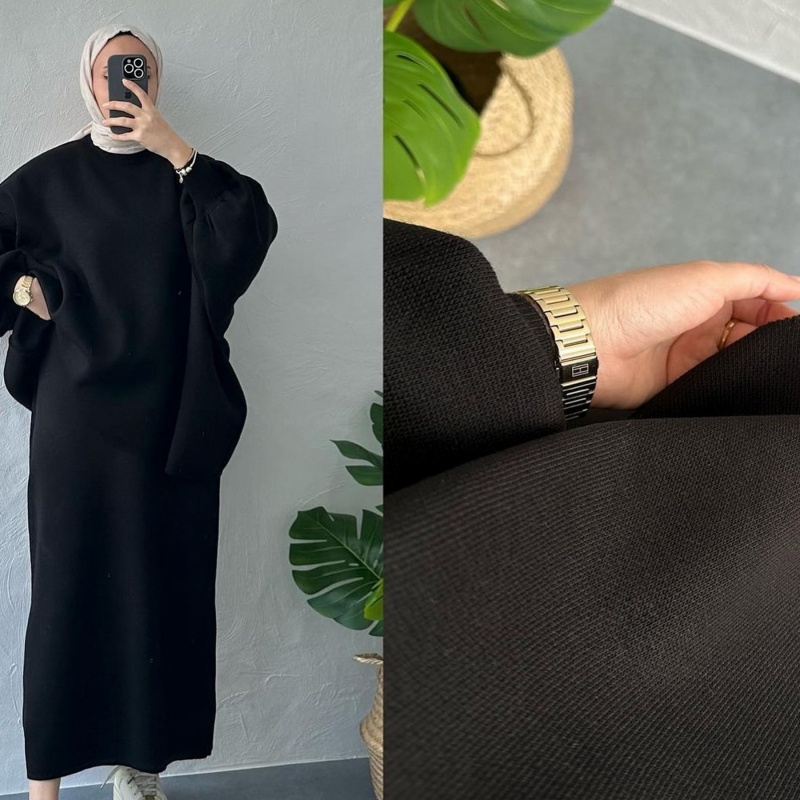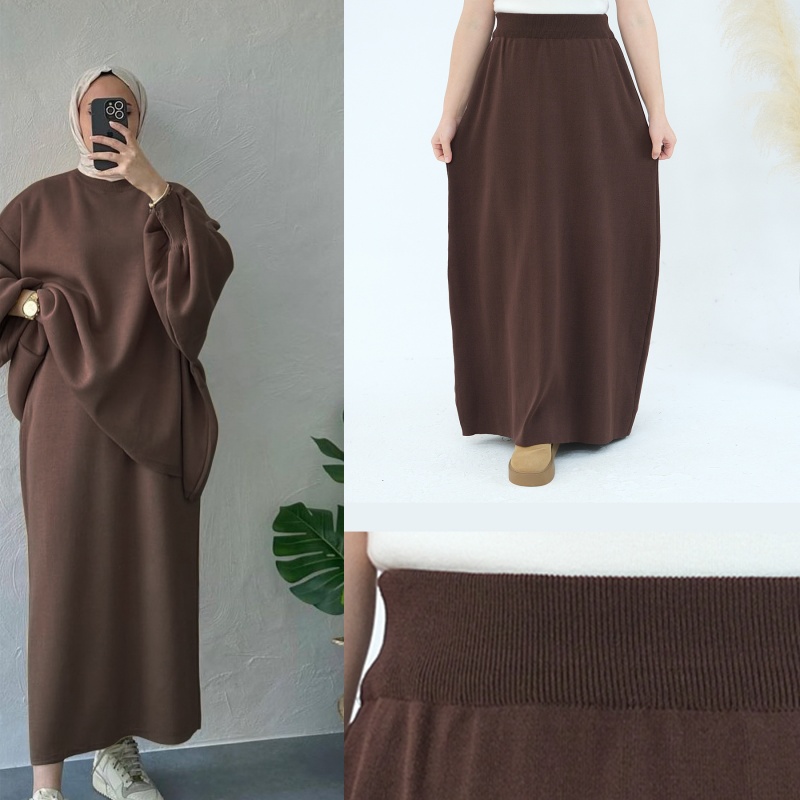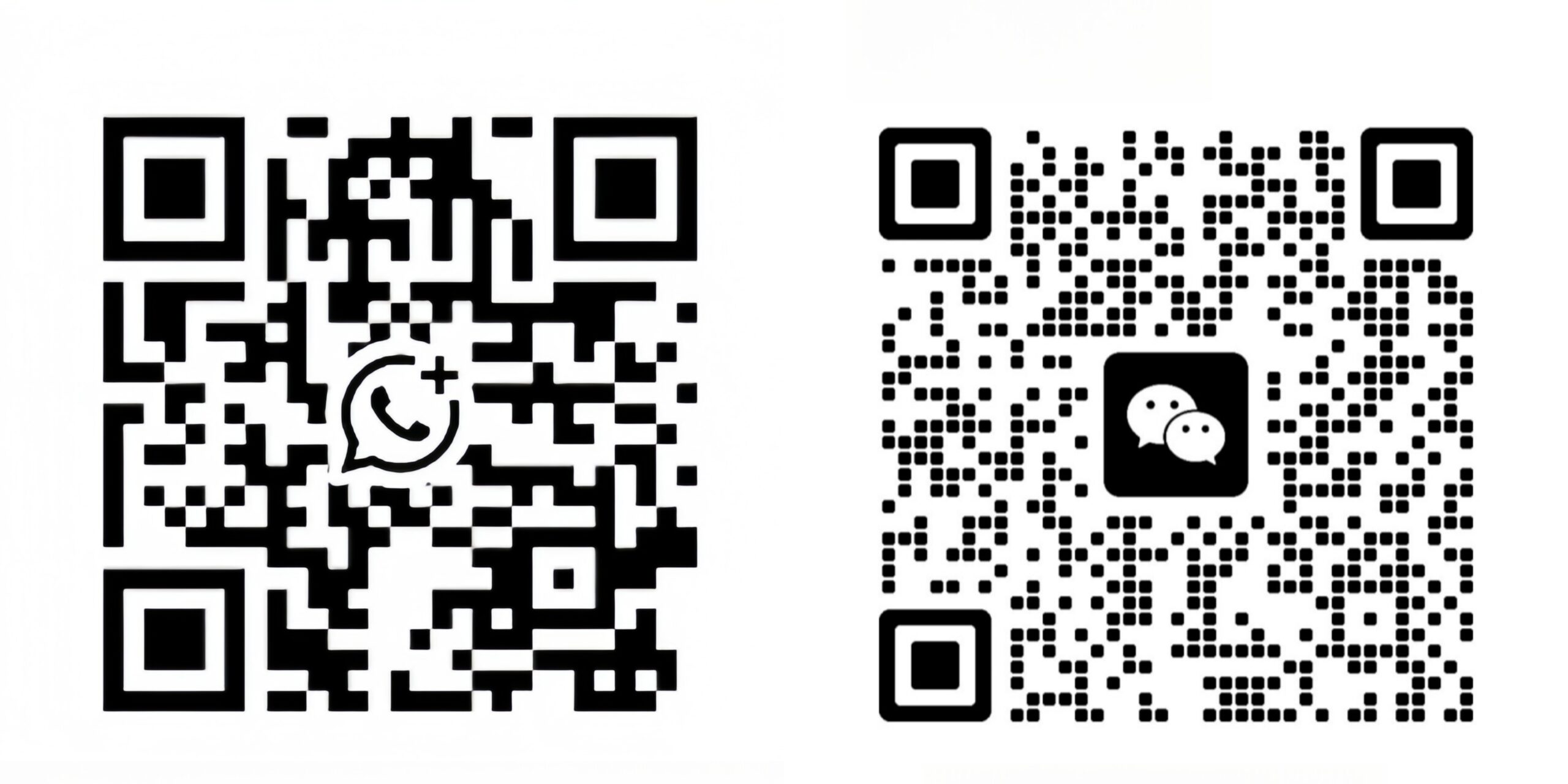The picture shows a women’s sweater suit.
The upper garment fabric: As a weft knitted fabric, the upper part of this sweater set is woven by a computerized horizontal knitting machine. The computerized flat knitting machine can efficiently weave large pieces, sleeves and other clothing pieces. It can precisely control the number of stitches and weaving density, creating a loose and three-dimensional lantern-shaped sleeve effect, making the sleeves present a full shape. The collar part may be lifted by special needling techniques to ensure the flatness and fit of the collar.
Rib: To prevent the fabric from coming apart at the cutting point, rib treatment is carried out. Three-line or four-line single-sided ribs are mostly used. After processing, through the sewing process, the front, back, sleeves and other garment pieces are precisely sewn with a sewing machine to ensure that the joints are flat and firm.
For areas that are difficult for machines to sew, such as the edges of collars and cuffs, the “pick and bump” technique is adopted. Through manual needle picking, needle striking and other operations, the edges are finely processed to make them flatter and more aesthetically pleasing. At the same time, weak parts are reinforced to prevent thread detachment.
Washing water: Washing water is of vital importance in sweater making. One of its purposes is to remove the stains that the woven pieces are stained during the weaving and processing. The second is to control the feel of the sweater. By using different washing methods, the fabric can achieve a soft and comfortable touch. The third is to adjust the softness and hardness of the sweater to meet the design expectations; Fourth, control the shrinkage rate of the sweater to ensure its dimensional stability during subsequent wearing and washing.
Ironing: Sweaters will shrink after being washed and need to be ironed and shaped with a steam ironing pot and a specially designed ironing board. First, iron the sleeves, then the body. Fix the size of the sweater to make it smooth and crisp, presenting a good appearance.
Vehicle labels: According to brand or production requirements, the main label, wash label, size label, إلخ. are sewn at appropriate positions to facilitate consumers’ understanding of product information.
Sweater inspection and mending: Carefully check the sweater for weaving flaws, stains, sewing issues, إلخ. through methods such as one light exposure and two light exposure. If problems such as exposed holes, rotten holes or flower needles are found, they should be repaired with knitting needles or hand needles to ensure product quality.
The lower garment woven fabric: It also employs the weft weaving technique, mainly featuring rib weaving, which endows the skirt with good elasticity and vertical texture. The ribbed part at the waist is woven with a special stitch to increase elasticity, ensuring comfortable wearing and less likelihood of slipping. The hem of the skirt may be made to sag naturally by adjusting the weaving density.
Bone and suturing plate: First, the bone is treated to prevent the edge from coming apart, and then the side is precisely sutured with a suturing plate machine. When sewing the ribbing at the waist to the main body of the skirt, strictly control the flatness and the naturalness of the transition to ensure no foreign body sensation when wearing.
The subsequent processes: washing, ironing, marking, checking and mending the clothes are similar to those of the upper garments. Washing shapes the feel of the skirt and controls shrinkage. Ironing fixes the style. Marking information on the car label. Checking and mending the clothes ensure quality.
